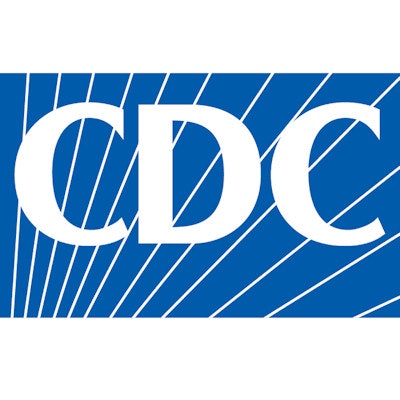
A March 9 report from the Centers for Disease Control and Prevention (CDC) detailed a cluster of nine cases of idiopathic pulmonary fibrosis (IPF) among dental personnel treated at one care center in Virginia from 2000 to 2015. This is the first known described cluster of this condition occurring among dental personnel.
No clear cause was identified, but occupational exposure may be the culprit, according to the authors.
"This cluster of IPF cases reinforces the need to understand further the unique occupational exposures of dental personnel and the association between these exposures and the risk for developing IPF so that appropriate strategies can be developed for the prevention of potentially harmful exposures," they wrote.
The report's lead author was Randall Nett, MD, of the respiratory health division of the National Institute for Occupational Safety and Health of the CDC. The report was published in Morbidity and Mortality Weekly Report (March 9, 2018, Vol. 67:9, pp. 270-273).
Deadly condition
Idiopathic pulmonary fibrosis is a chronic, progressive interstitial pneumonia of unknown cause. An interstitial pneumonia is an inflammation of the lungs that involves the mesh of lung tissue rather than the air spaces. The condition is characterized by slowly progressive dyspnea (difficult or labored breathing) and a nonproductive cough. Median survival after diagnosis is three to five years. Treatments include pharmacotherapy and lung transplantation.
While there is no known cause for the condition, contributing factors may include viral infection, cigarette smoking, and exposure to dust, wood dust, and metal dust, the authors noted. There are no examples in the literature about dental personnel and IPF, but annual U.S. incidence ranged from 6.8 to 17.4 per 100,00 population from 1988 to 2005.
The CDC review was spurred by a Virginia dentist undergoing treatment for IPF who contacted the CDC to report that a number of other dentists at the clinic were being treated for the condition.
The authors reviewed reports on almost 900 patients with IPF at the clinic between 2000 and 2015. They identified nine dental team patients: eight dentists and one dental technician. Seven of these patients had died. Since the data were submitted, another dentist with IPF has been identified at this facility. The dental personnel patient characteristics are listed in the table below.
| Demographic background of dental professionals with IPF | |
| Sex | All males |
| Race | 5 white, 1 black, 3 unknown |
| Median age (range) | 64 years (49 to 81 years) |
| Median survival time from diagnosis (range) | 3 years (1 to 7 years) |
| No. of patients diagnosed with lung restriction | 5 of 8 |
| History of smoking at diagnosis | 3 current smokers, 1 former smoker, 5 unknown |
The authors were able to contact one of the living patients, who reported polishing dental appliances, developing x-rays, and preparing amalgam and impressions without respiratory protection for the first half of his 40-year dental career. He reported that he wore a mask for the second half of his career.
This patient also reported work-related exposure to dust while working as a street sweeper for three months before entering dental school and environmental exposure to dust from coral beaches for approximately 15 years while visiting the Caribbean region.
The other patient who is alive did not respond to requests for information.
“Further investigation of the risk for dental personnel and IPF is warranted to develop strategies for prevention of potentially harmful exposures.”
No clear cause
The CDC authors acknowledged four limitations in their report:
- The report only covered patients undergoing treatment at a single tertiary care center specializing in IPF treatment, which might have led to an overrepresentation of dentists.
- Only one patient completed an interview, which limited the ability to explore past occupational exposures.
- Multiple patients reported exposures that occurred outside of work and that are known risk factors for IPF, including tobacco smoke and dust.
- No biopsy specimens were available for examination.
The eight dentists identified in this cluster exceeded the number of expected cases of IPF, given the number of dentists in the U.S. and the disease prevalence, according to the authors. While they were not able to identify a clear cause for the disease, they noted that dentists and dental personnel experience unique occupational exposures, including exposure to infectious organisms, dusts, gases, and fumes.
"Further investigation of the risk for dental personnel and IPF is warranted to develop strategies for prevention of potentially harmful exposures," the authors concluded.



















